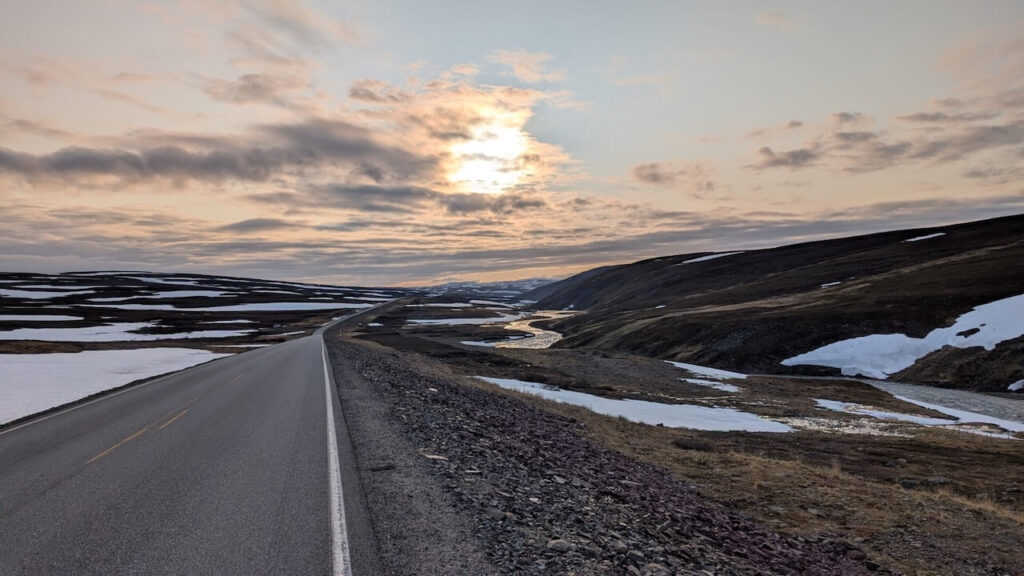
Go Further North
A Long Ride Through the Arctic of Europe: From the forests of Finland to the fjords of Norway and the wilderness of Swedish Lapland The
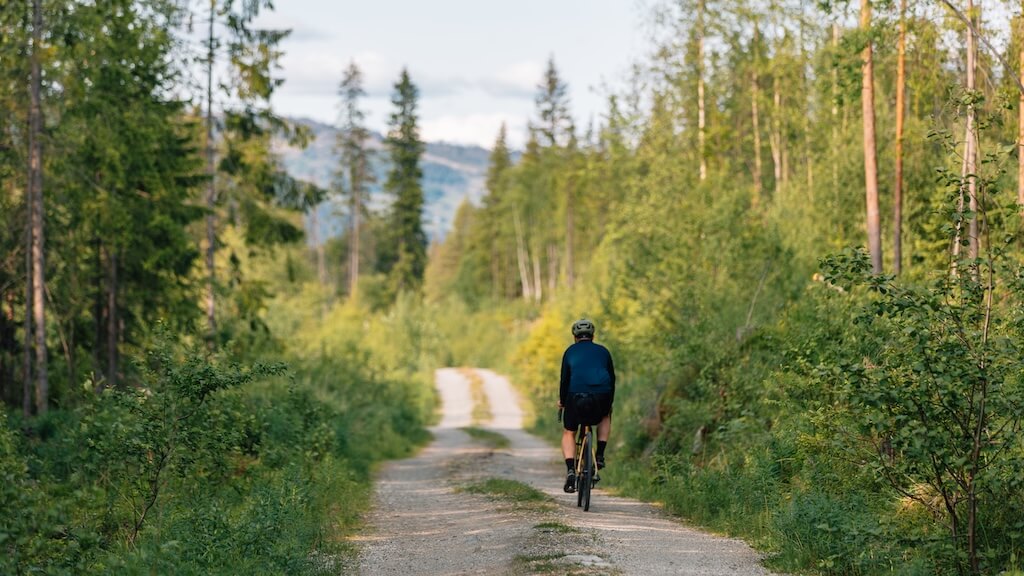
A 4-Day Journey Through Mountains, Fjords, and Gravel
Every year, for just a few days, Cycle Norway does the unthinkable – we step inside the enemy’s camp and rent a vehicle. It feels wrong, it feels dishonest. Driving roads I’ve once cycled is like betraying something sacred, like disowning your own child or setting fire to the house you spent years building. When you’ve cycled a road, really suffered through it, returned on it, taken shelter beside it, seen it in fog and sun and sideways rain, coming back behind the wheel feels like you’re cheating. But the truth is, some jobs can’t be done by bike, and one of them is capturing world-class photography across a whole country in just a few days on a limited budget.

In 2023 I teamed up with one of Norway’s most talented travel photographers, Emil Nyeng. We spent three days travelling around central Norway to shoot some of the most scenic cycling roads in the country. These were roads I knew by heart, having cycled them many times before. But this time we came loaded with over €20,000 worth of professional camera gear. I brought the route knowledge, the hidden viewpoints, and memories of light hitting mountain ridges in late evening. Emil brought the eye for detail, the patience, and a deep understanding of what makes a photo more than just pretty, the feeling, the stillness, the truth inside the frame.

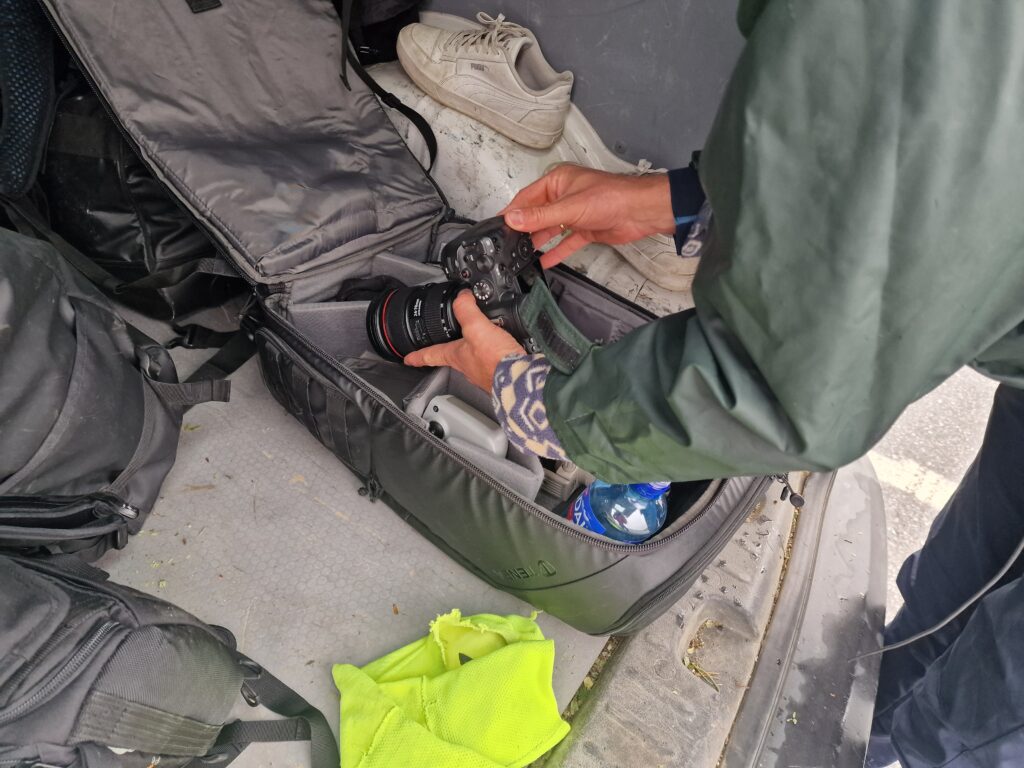
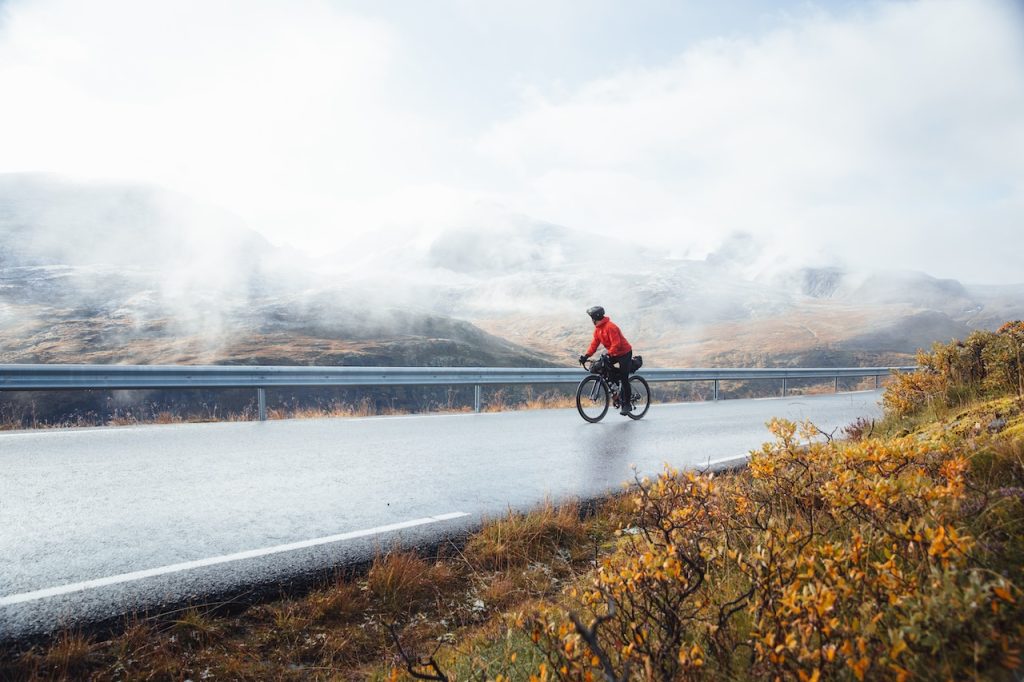
One example still stands out. On day two Emil said we had to get up at 05:00. He wanted to shoot a mountain as the sun broke the horizon. He told me the goal was to capture that moment where the first rays meet the morning silence, when the world hasn’t woken yet and the mountain isn’t just a shape but something sacred. The results were something else. That’s the difference between a snapshot and a shot that makes people feel what it was like to stand there.

In 2024 we went bigger. We flew up north and travelled through Lofoten and Senja over three intense days. We wanted to shoot the Arctic’s sharp edges and moody tones, its peaks and open coastlines, like never before. But Norway had other plans. A storm rolled in on day two and wrecked our schedule. We lost precious time and money just sitting around waiting for the weather to change. And that’s the challenge when photographing Norway. If you want to shoot one place, you can wait out the rain, wait for the light to break through. But if the job is to capture 30 locations in under 72 hours, then you have to roll the dice and pray to the weather gods. On the last day, because we lost so much time, Emil suggested we get up at 03:00 and just keep going until our plane took off at 19:00. In summer up there you get 24 hours of daylight, so if you’ve got the energy, you can keep shooting all day. That’s what we did.

Now it’s June 2025 and we’re back on the road again. This time we’ve got a beat-up “rent-a-wreck” work van that should realistically cost around €20 a day but being in Norway, it’s over €100 with insurance and all the extras they throw in. But it does the job. It’ll take us around 1500km in four days through southern, central, and western Norway. The plan is to shoot the best cycle roads from the inland valleys to the edge of the fjords and back again. We’ve mapped out the locations, the climbs, the passes, the ferry crossings, all the places that deserve to be seen, remembered, and maybe visited by someone who decides to come here on their own cycling journey.
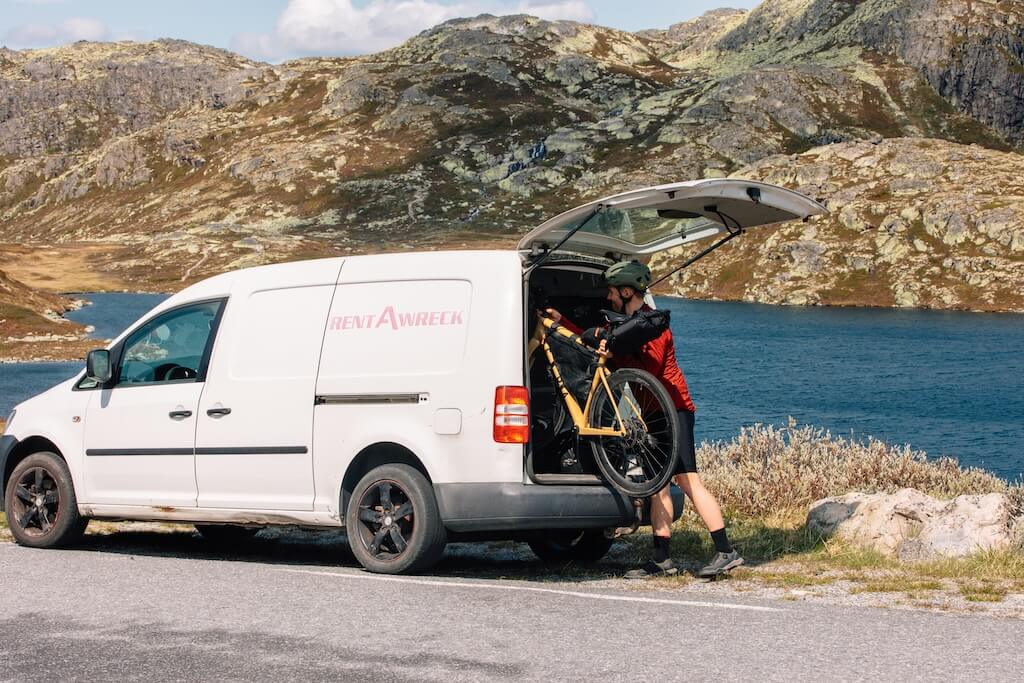
The first day is always the toughest. It’s the day when logistics get in the way. Emil lives in Lillehammer, around 2.5 hours north of Oslo, so we arranged for him to take an early morning train to Asker where I picked him up. He was waiting with three heavy bags full of camera gear worth more than the van we were driving. After a couple hours driving through the flatter, less dramatic bits of Norway, we reached our first destination, Notodden, the gateway to Telemark. There’s history here, not just cycling history but industrial heritage, the kind of place that reminds you how connected the land and people used to be before the world became so automated and disconnected.

After dodging the summer tourists, we headed toward one of Norway’s lesser-known but in my opinion best climbs, the road that leads up to the plateau near Gaustatoppen, the highest mountain in southern Norway. I’ve cycled it twice before. Driving it this time, especially in good weather, was hard to swallow. It felt like I was betraying the road. But we managed to capture a few solid shots, and I was reminded of why we were doing this. My iPhone photos from 2023 looked like something a hyper child on a sugar rush would take, these new shots were finally doing justice to the scale of the place.
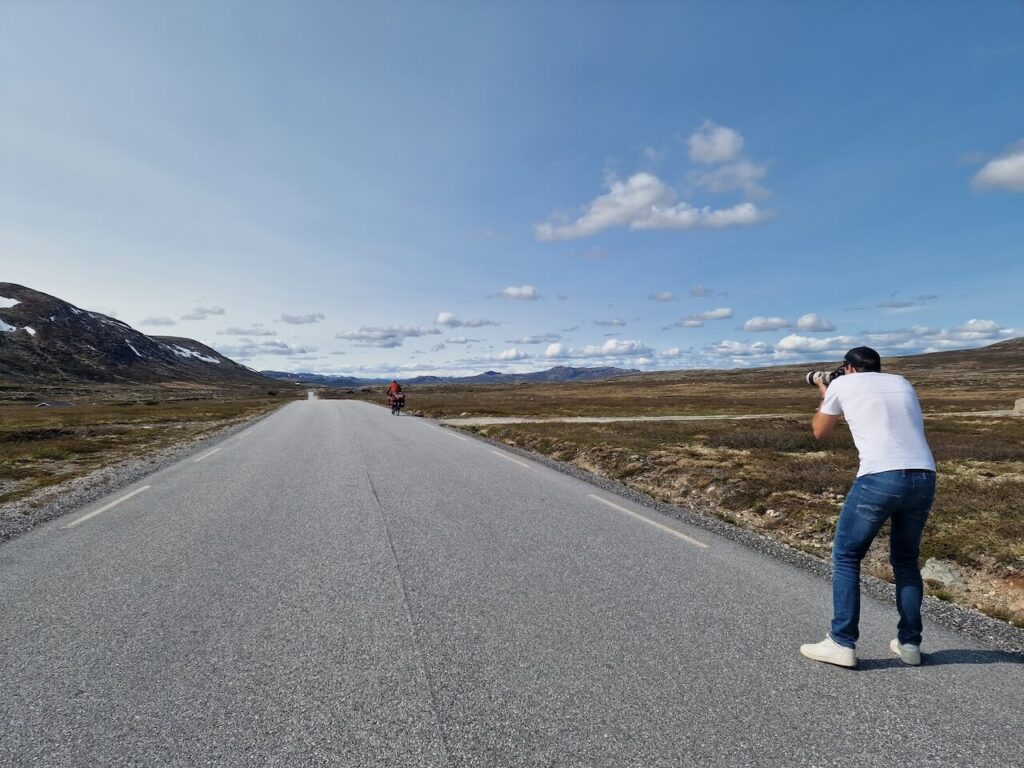
From there we headed north toward Geilo, stopping at various locations on the way, shooting what we could, chasing the light, checking weather forecasts constantly. At one mountain pass, we stopped to chat with a German pensioner cycling to Nordkapp and then back home again, a 3-month journey on two wheels. It was freezing up there, wind in the face, a tough 20km stretch ahead of him, but he was smiling, alive with the joy of the road. I tried lifting his bike and nearly put my back out, it must have weighed 80kg. Still, I thought to myself, I hope I’m half that strong when I’m his age.
This next stretch of four days is non-stop. Today alone we have over 14 hours of driving, filming, and shooting. We’ll be in wild places with snow still hanging on the peaks and the temperature hovering just above freezing. But meeting people like that German cyclist reminds me why this matters. Why it’s worth the long days, the expensive petrol, the poor sleep, the bad food.

Cycle tourism is still overlooked in Norway. It’s not taken seriously by most in the tourism industry. But we believe it has great potential, not just economically but culturally. It’s a better way to travel, a way that asks more of you but gives back ten times in return. Norway isn’t shouting for attention. It whispers, slow down, take your time, look around. This land took millions of years to become what it is, why rush?
Today, I’ll be hearing those whispers while I sit behind the wheel of an old van doing 80km/h down some of the world’s most beautiful roads. But if the images inspire more people to come back and experience it by bike, then the trade-off is worth it.
Continue the adventure in Part 2 here


A Long Ride Through the Arctic of Europe: From the forests of Finland to the fjords of Norway and the wilderness of Swedish Lapland The
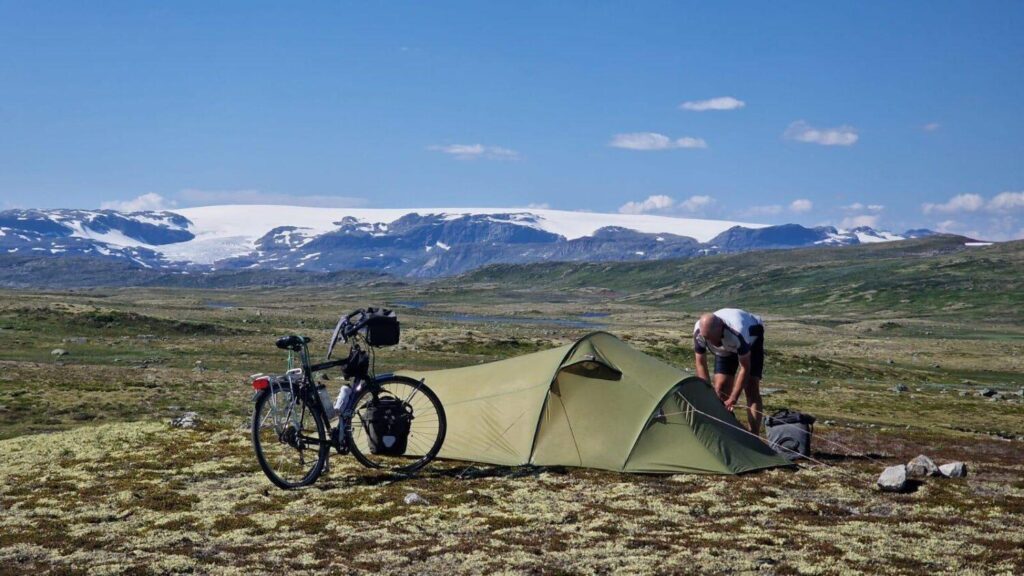
Cycling Through Norway’s Warmest Summer in Years The past few weeks in Norway have been extraordinary. From the deep fjords of the west to the
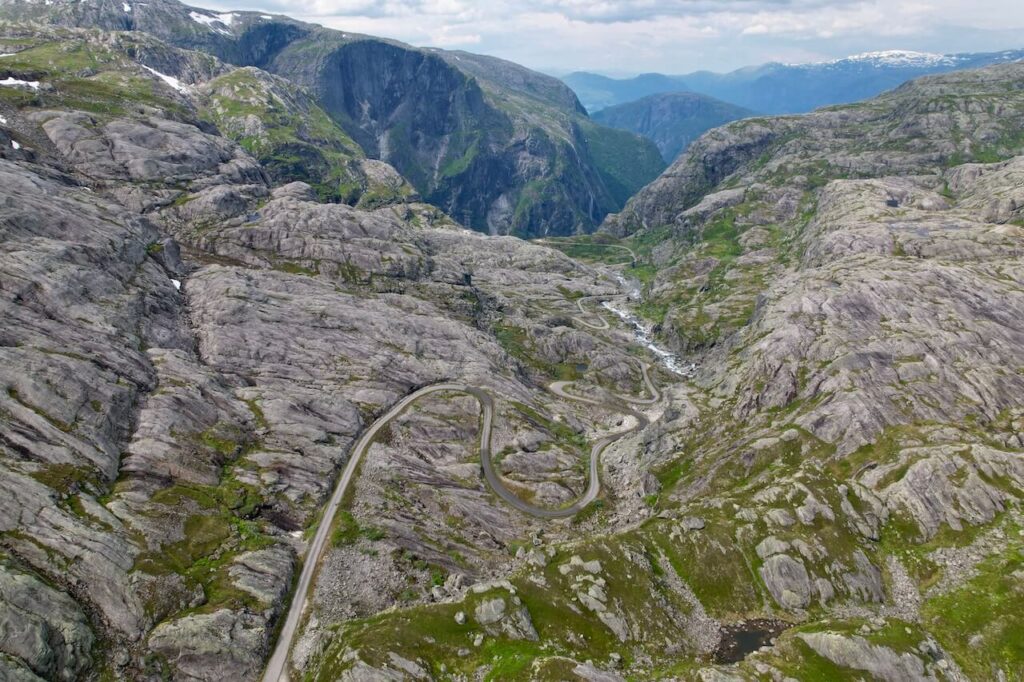
Tucked away in the rugged terrain of western Norway lies one of the country’s most challenging and least-known cycling climbs: Osafjellet. Overshadowed by more famous
Cycle Norway is dedicated to making Norway, safer and more enjoyable to experience by bike and to inspire and inform a growing audience of the opportunities available.